Forty years ago Oregon had very little winemaking. The land was cultivated with other crops, such as apples and walnuts. Few grew grapes and even less made wine. Then five families moved up and started growing grapes and making wine. For a long time, there was nothing extraordinary about it. But slowly and steadily, the Oregon wine initiative gained momentum and today it is considered one of the most interesting places for winemaking. Recently BKWine reporter Ulf Bengtsson had the pleasure of participating in a lunch tasting with Maria Ponzi, daughter of the founders, and marketing manager at Ponzi Vineyards. Here is the story she told.
Finding an ideal place for Pinot Noir
“We have been working with our wines in Oregon since 1970. I know it does not seem too old for you all in Europe, but we are considered pioneers in the Oregon wine industry. My folks, Dick and Nancy Ponzi moved our small family up from northern California in 1969. The sole purpose of the move was to find a place that would be most ideal for growing and making pinot noir. So we had actually moved outside and away from Napa Valley, away from a region that was considered the wine growing region of the United States.”
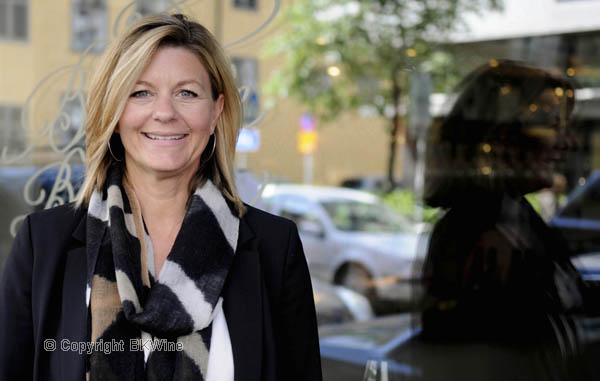
“The state of Oregon is north of California, we are in between Washington State and California, so we also share the Pacific Ocean. The Willamette Valley, where we ended up, is a beautiful growing area, for special grapes. Not for all grapes, but for very special grapes that are small, cool climate varieties, like pinot noir, chardonnay, and pinot gris. The Pacific Ocean to our west, and the Coastal Mountain range, and then to our east we have the Cascade Mountains. We are in the Chehalem Mountains AVA.”
“The valley is protected by these two mountain ranges, the soils are extremely fertile, we have a volcanic basalt based soil, and in our area, which is the very northern part of the Willamette Valley, we have what we call a wind-blowing top soil. Millions of years ago, there were floods that came through, that mixed the soils up and deposited them on top of the basalt. What we discover in our area, as the vineyard gets older and starts to get into the basalt, is that we find that the flavours of the wine become more interesting and more pronounced. So, we are short lived, only forty-five years now, but, being one of the older families, we can see the development of the soil and the vineyards.”
Oregon is not California
“Oregon is very different from California, the land is relatively undiscovered. So we have a lot of land that is planted with other crops, you will see cherries and apples, a lot of berries, walnuts… But what we have learned over the years is that we can plant on higher elevations (we started on lower elevations). The range of elevation is from 200 feet to 800 feet. When we first planted we were on a south-east exposure, we were looking for as much sun as possible. In the later years, the last ten years, we have been planting on a north-west exposure. As the climate is changing, we learn that we also need to capture sunlight in the afternoon, on the other side. At Ponzi we like to diversify, different elevations as well as different exposures.”
“We own 130 acres (53 hectares), but we are always looking for new properties to purchase and plant. Buying fruit is less important than California. It is a little bit different!”
Sustainable farming
“Everything we farm, we farm sustainably. We purchase fruit from farmers that are farming in the same fashion, certified sustainably, or certified organically, or certified bio-dynamically. In Oregon, which is different from California, you will find fifty per cent of the wine growing is farmed in this way. We have always thought of the future, of the sustainability. In Oregon we started with this early. Much is because we are small family operations, most founded like us by a family, many driven by the thought of making great wine rather than making great profit. Even today, we see few corporate, publicly held companies in Oregon. Much different from what you see in California.”
“As said before, we are still family owned and family operated. I handle sales, marketing and administration, my younger sister Luisa does all the winemaking and production. She has been doing that for the last twenty two years. She studied in Burgundy, so her training is not American. It is actually from the roots of pinot noir. She has a degree in oenology from a small school in Beaune. Compared to our father, I think she is making more consistent wines. My father was more the experimenter, the pioneer. He is not trained. He is actually a mechanical engineer. I think he is not so much interested in the vineyard, but more what you do with the grapes once they come into the winery. In 2008 we built our new facility, all gravity flow based.”
Why Oregon? Why Winemaking?
“My father is also a first generation Italian immigrant, and I think they always made wine. Not good wine by the way, but still! I think that he was drawn by that and wanted to do something with the land. He actually worked for Disneyland. That is why he left corporate America! No, seriously… There was no manual, where to plant, what clones to use…”
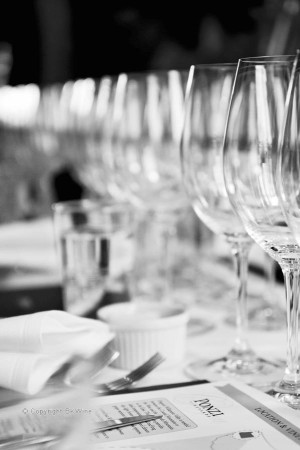
“I think the winemaking has definitely changed. I think Luisa’s wines are more consistent from vintage to vintage, even though we have had extreme vintages with cool vintages and hot vintages even in the last five years. You are tasting the 2011, which was very cool, which made it difficult to get fermentation started in some cases. Then we had 2012 which was very warm, and we had to cool down fermentation. I would say we need to be able to work with either situation in maintaining quality. So that is the challenge my sister has.”
“When my father was making wines, the first fifteen years, the vintages were very cool, very wet. By 1990 we started to see a switch in vintages, more warm temperatures. From 5000 cases of wine then to about 45,000 cases now. My sister is responsible for a lot of people!”
“I would say sixty per cent of our fruit comes from our own vineyards. Forty per cent we purchase from growers in Willamette Valley. But as I mentioned, all of the growers we work with have the same philosophy in terms of farming, so these are usually small farmers that produce from ten, twenty, thirty acres, so a lot of hands-on.”
“I think the main thing again is why we moved to Oregon, I think the important thing is that we are looking for sunlight, we are looking for cool temperatures. Average temperature is sixty degrees Fahrenheit during growing season. Long days of sunlight. That allows the small berries to mature but over a long period of time. In a good year we would like to harvest in the middle of September, maybe the third week of September. That is our growing season, from April to September.”
Were you actually looking for this type of place? Did you have a picture in mind of what grapes you wanted to grow and what wine you wanted to make?
“Yes. The focus was pinot noir. It was not to grow grapes. It was not to make wine. It was to grow pinot noir. It was to make really outstanding pinot noir. I think the fun part of this story is that the five families that started, all of them had the same philosophy, they wanted to make great wines. They wanted to make great pinot noir. It was not just to have a little boutique winery, to put one’s name on a label, it was to really try to make great wine.”
“We were the only Italians. I do not know why they moved up. I think it was the restlessness of the sixties, wanting to get back to the earth. The five families that started were all from other careers. Someone was from the army. They were teachers. Professors. So they had varying backgrounds. They all found each other and collaborated on ideas. Not just the winemaking, but also in terms of marketing, how they were going to market the wines, how they were going to sell the wines. We are proud of how they worked together. When we came, there were no wine grapes. There were wine grapes in the 1800s, but not when we came.”
Where do you look for inspiration?
“I would say that Luisa is always looking at Burgundy. Alsace for the whites.”
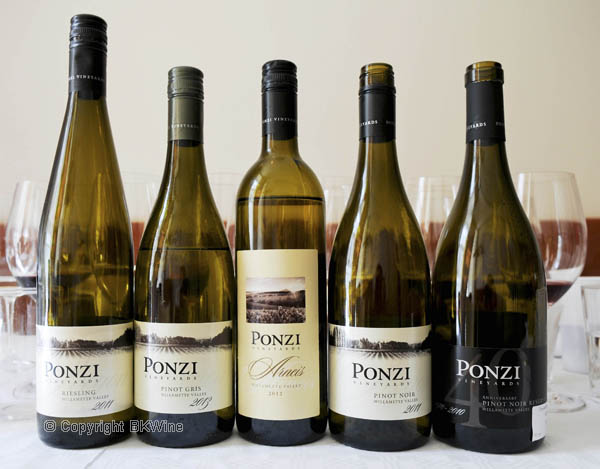
And the wines…
Maria Ponzi has brought three white wines to the tasting. We start with a riesling.
2011 Riesling
“The 2011 is a cooler vintage, very cool temperature during the entire growing season. I remember in July the grapes had not turned right colour, which made us a bit worried! Finally we had some heat but, very, very late. We harvested in late October. Luisa always tries to maintain balance between the fruit and the acidity and I think she did a great job, considering. The riesling is a wine that we make very little of actually. It is from one of our oldest vineyards, the one that we experimented with back in the 70s. My father made dry rieslings in the 70s. It was a very popular wine in the 70s, in America. So we made dry rieslings for many years until the 1990s when interest declined. Then Luisa decided to try to make it again. She started to make dry rieslings maybe just five years ago. Something old brought back to be new.”
“I think it is a nice riesling, dry style. The idea of riesling really came from Alsace. When my father and mother were considering making wines they travelled to Alsace and to Burgundy to ask questions and to get ideas. So the Alsatian model has always been what we are looking for, in terms of wine style.”
This is a very fresh wine, very elegant, very dry. Not too much acidity either. With rising temperature and air, we get more exotic fruit (~EUR 23).
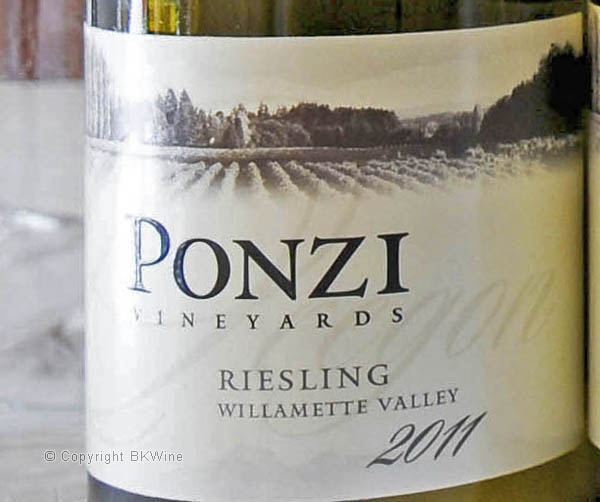
2013 Pinot gris
“The next wine is the 2013 pinot gris. It has just been released. The 2013 vintage was very similar to 2011 actually, although a little later! We did not think we would pick later, but we did! 2013 was later than 2011. We had a lot of heat. We had a good spring with lots of sunshine so we thought it would be perfect. But then the rain came in August, when we wanted to pick. The rain stayed for two weeks solid, so we ended up picking at the end of October. Pinot gris is a variety that we pioneered as well, back in 1976. The original planting at the first vineyard was a lot of Alsatian white varieties, pinot noir, and some chardonnay. We grafted all the Alsatian varieties to pinot gris in 1974 and we produced the first pinot gris in 1976. This is a wine that we have been making for quite some time. It is a very natural grape for us to grow, it likes the cool climate that we have. It is all stainless steel fermented. You will not see any oak in this wine at all. I love this wine. It is very fresh, beautiful fruit, nice balance with the acid.”
I find it softer, and more pronounced exotic fruit. A very beautiful wine (~EUR 25).
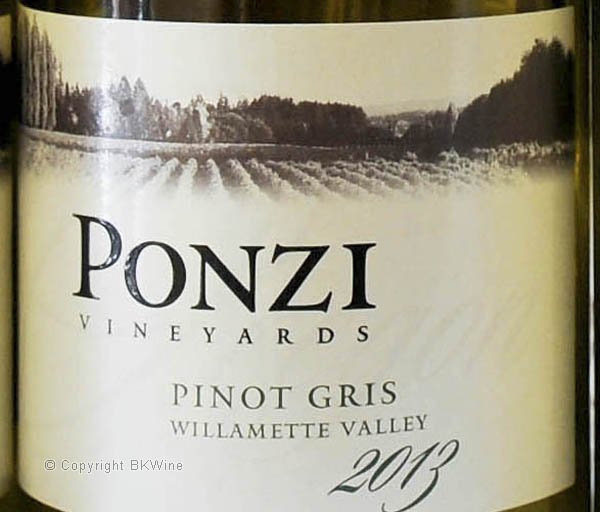
2012 Arneis
“The third white that you will have today is our Arneis. From Italy, Piedmont. We are good friends with the Currado family of the Vietti Winery. Their children have done internships with us, Luisa has been with them. It has been a bit back and forth there. In 1990 we visited them and asked, could we please take some of your arneis back to the states. And for some reason they said, sure! This was during the time you could take things in your suitcase so we took them in our suitcase.”
“We grow it at a very small parcel, about six acres, at a warm site. We make the wine with a little oak, just some barrels, but predominantly stainless steel fermentation. The vintage is 2012, which was a warmer vintage.”
This was fun! Fresh, quaffable, exotic fruit. Nice wine. I would definitely buy more of this (~EUR 32).
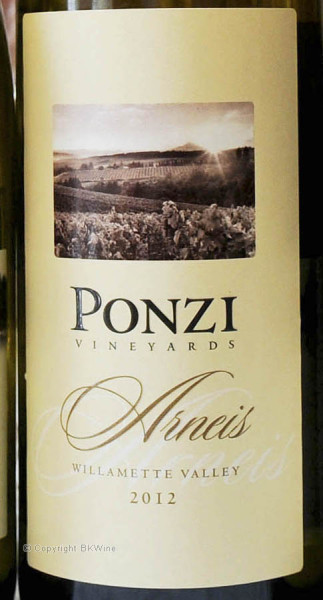
2011 Willamette Valley Pinot Noir
“This we call the Willamette Valley blend. In addition to our own grown pinot noir, we also purchase fruit from other growers. The reason why we do that is to add interest to our wines. We buy fruit from the southern part of the valley, where the soil is different. We also purchase from other areas where the soil has more clay. Different sites that bring different characters to our wine. The wines will continue to age during the next three years but are not built for longer aging. This wine will have fifteen different vineyards in it, fifteen different sites of pinot noir. We are looking for consistency in terms of style. Each vineyard is fermented individually and then blended. We have a library of history, even with the growers. Thus, we can understand how the wine in other vineyards performs from vintage to vintage.”
“We do a lot of different things, when the fruit is brought in, such as whole cluster fermentation. Fermentation is in open top vats, old Burgundian style fermentation. Even if we have increased our production we still make wine the way we did when we made five thousand cases.”
“We still have manual punch-downs in the morning and at night. Luisa is still very hands-on. In the cellar, we use French oak and American oak. Well, Oregon oak actually.”
It is a beautiful wine. Packed with warm, generous fruit, elegant. Plums and cherries (~EUR 35).
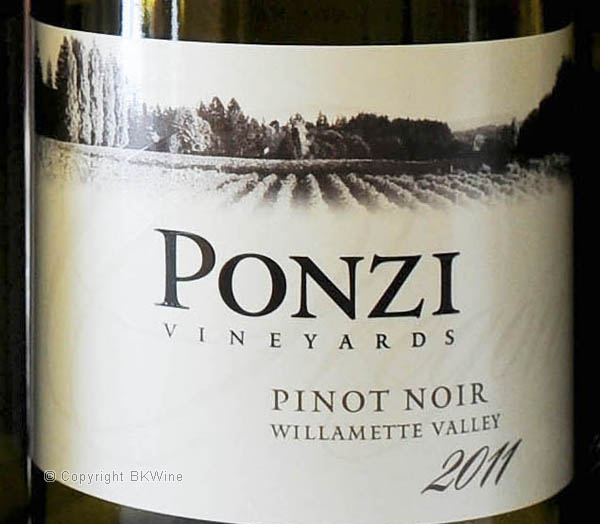
2010 Ponzi Anniversary Pinot Noir Reserve
“Cool vintage. Great structure, many layers, powerful elegant wine. Very Ponzi pinot noir. More black fruit than red fruit. This year is the 40 year anniversary, otherwise it is just the ‘reserve’.”
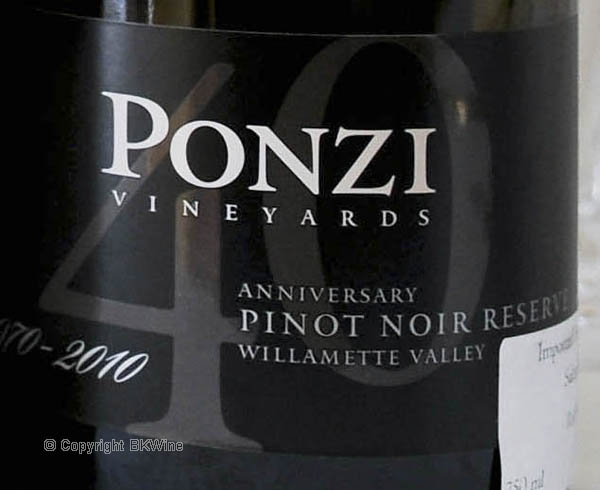
Similar to the first pinot noir, but more of everything. Better balance, more generous. The tannin structure is less explicit in this wine (~EUR 57).
Many thanks to Maria Ponzi for sharing the Ponzi story and for treating us with such good wines!
Ulf Bengtsson writes about wine under the pseudonym Red Scream on his blog Red Scream and Riesling, on wine, food, photography and other things that are important in life. Like detective novels, taking long walks in Stockholm and the occasional burst of exercise. He is also on Facebook.
[box type=”info” style=”rounded” border=”full”]BKWine organises wine tours, with wine tastings and winery visits, for wine lovers to many of the world’s wine regions but currently we do not offer any wine tours to Oregon. Contact us if you are interested in a custom designed wine tour to Oregon or to any other wine region in the world.
Travel to the world’s wine regions with the experts on wine and the specialist on wine tours.
The ultimate wine travel experience![/box]



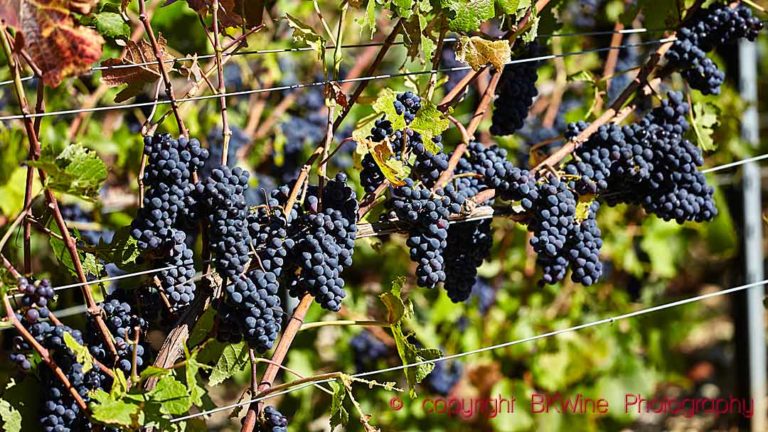
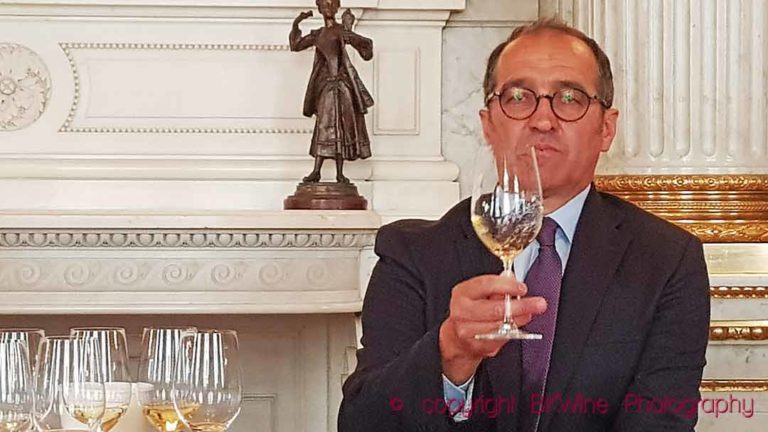





One Response